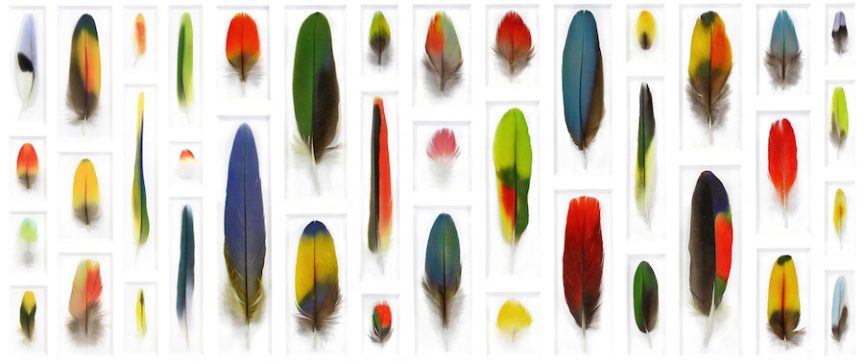Name: Christopher Marley
Which came first in your life, the science or the art?
In my mind, they were simultaneous. I can’t remember ever not wanting to be an artist and I can’t remember ever not being enthralled by the more arcane elements of nature. I’ve been a lover of beauty and of the process of discovering it in neglected places as long as I can remember.
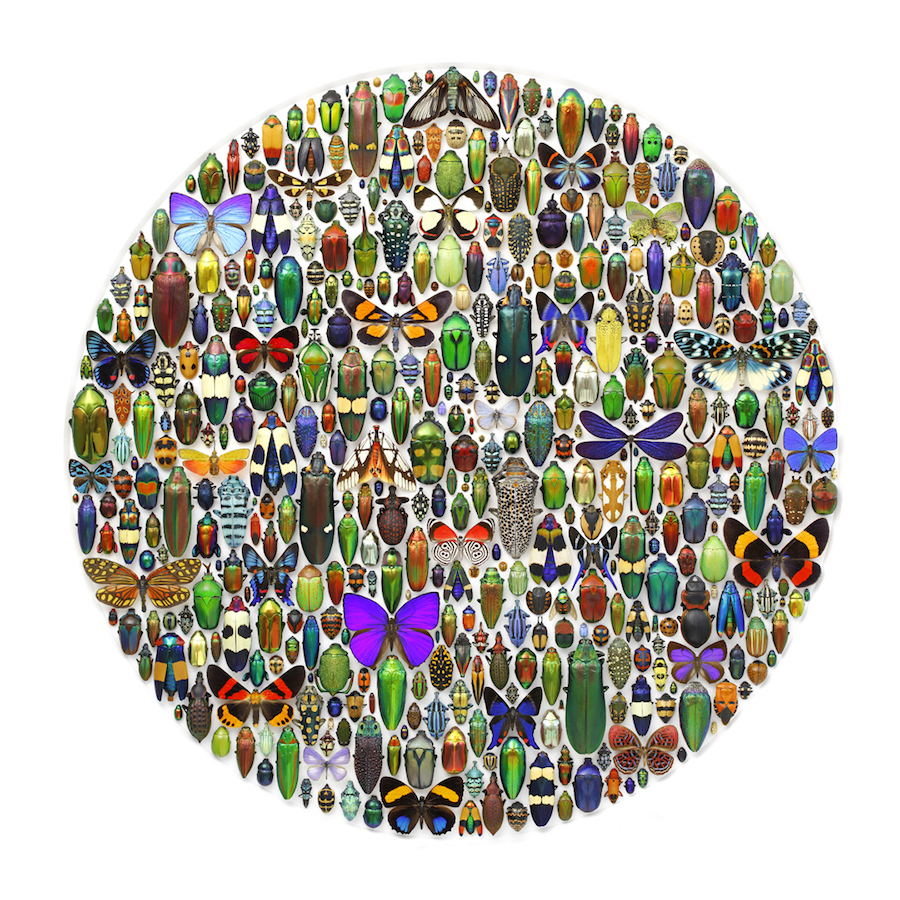
Museum Aesthetica
Which sciences relate to your art practice?
Entomology, Aviculture, Herpetology, Conchology, Geology, Paleontology, Botany, Teuthology, Ichthyology to name a few. There are not many life sciences that do not pertain at least tangentially to my work.
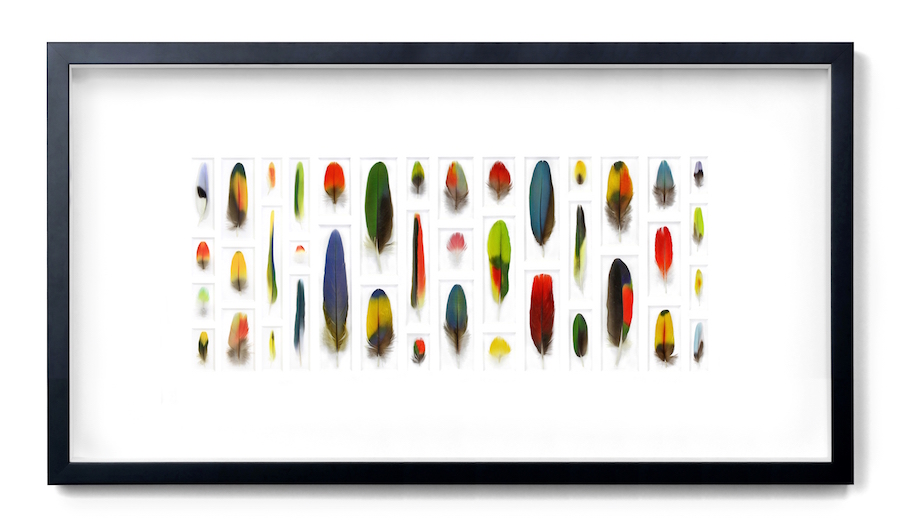
Feather Mosaic
What do you use to create your artworks?
I work exclusively with actual natural artifacts and specimens. It is rare that I ever even work with specimens that have color restored – though it is essential in some of the vertebrates – but all of my mediums are authentic specimens. I also shoot all of the images of my work, but consider my photography as incidental to the work.
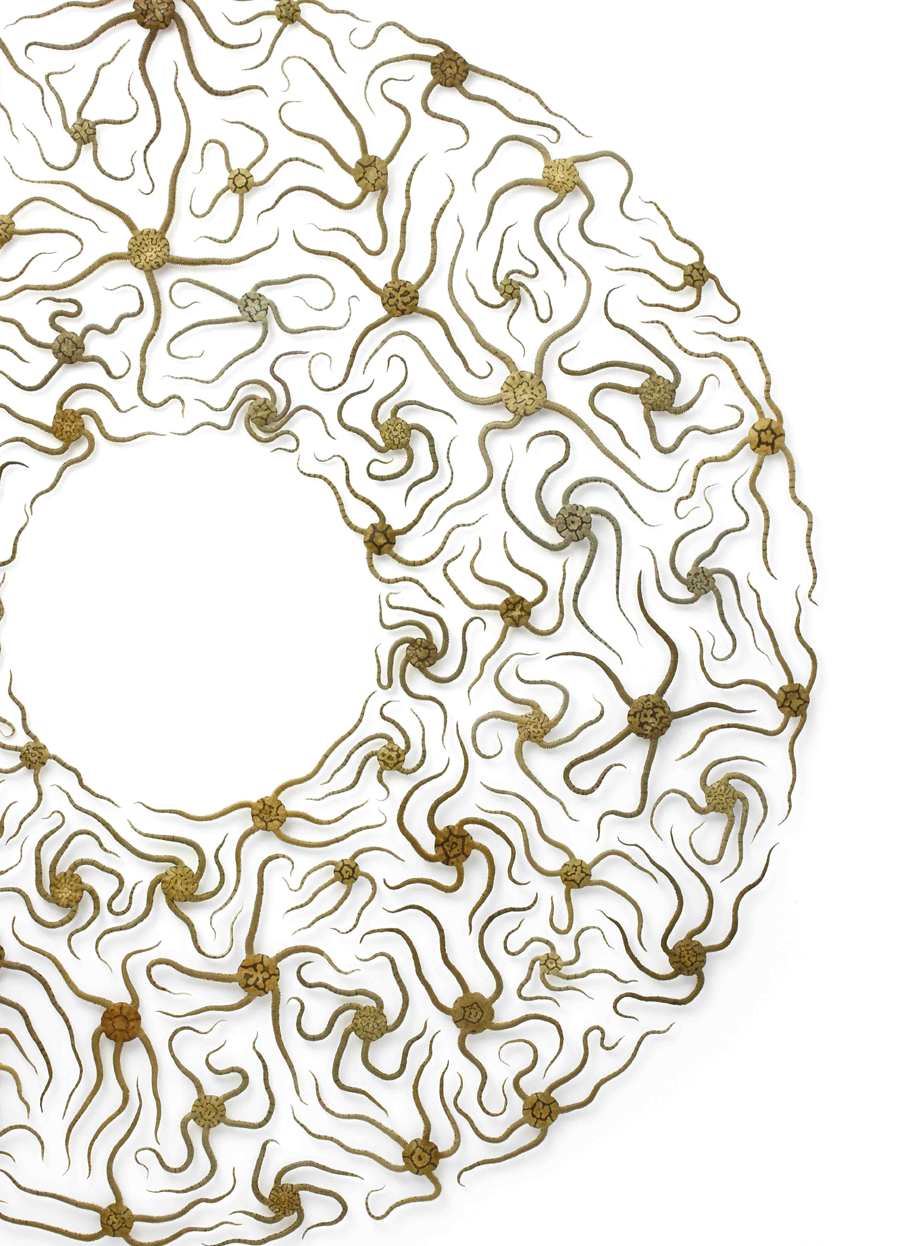
Museum Brittlestar
Artwork/Exhibition you are most proud of:
Unfortunately, I’m not quite ready to reveal the composition I’ve been working on for two years now, but it is quite spectacular if I may say so. I’ll just say that it is comprised of reclaimed reef sharks and will reveal it soon.
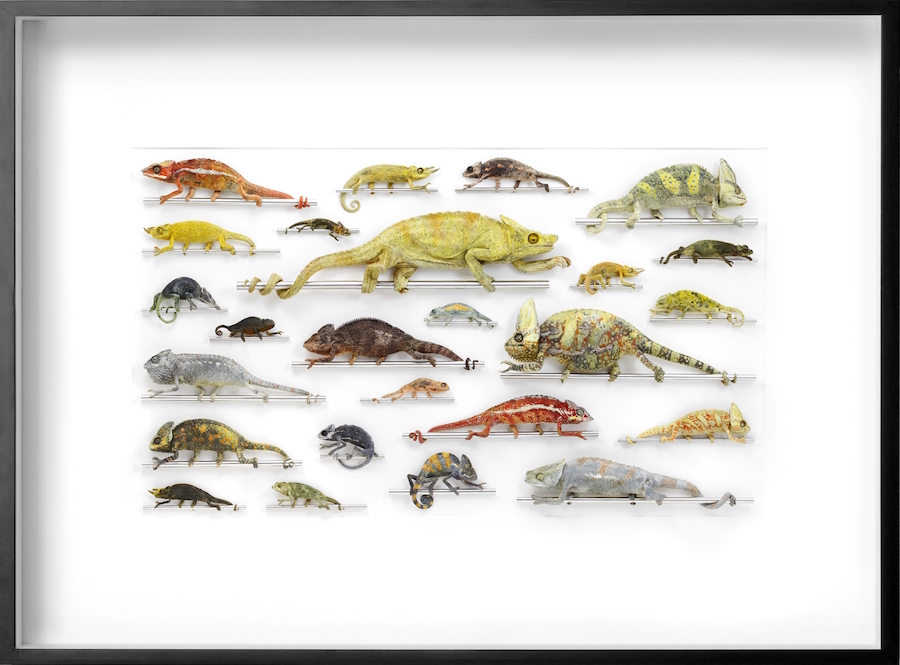
Old World Chameleons
Is there anything else you want to tell us?
In my mind, there is little separating art and life sciences. It is like trying to extricate dance from music. Art’s purpose is to heighten our aesthetic sensibilities, to sharpen our ability to experience beauty, to empathize with those life systems we come into contact with, to derive pleasure or stimulation from our interaction with arranged elements, in whole or in part. How does nature differ? We dance with it and within it. The aesthetics (or art) of nature is the rhythm we move to.
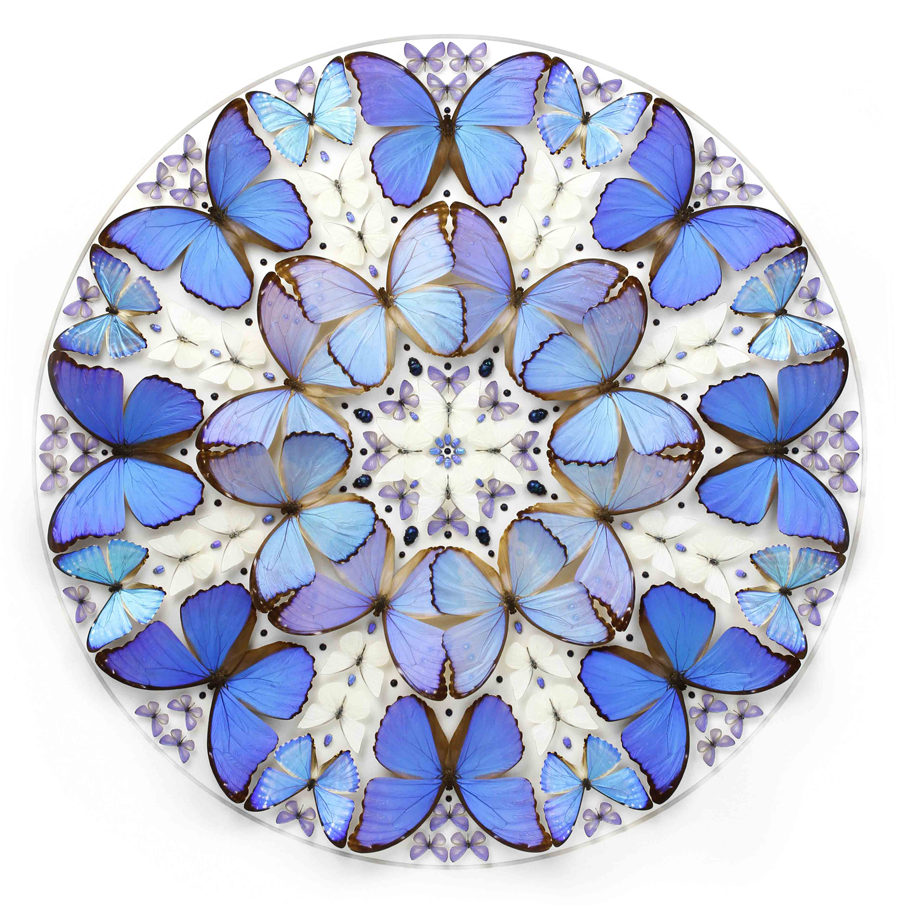
Museum Inflorescence
Artist links: Pheromonegallery.com, cmarley.com, Facebook , Twitter.
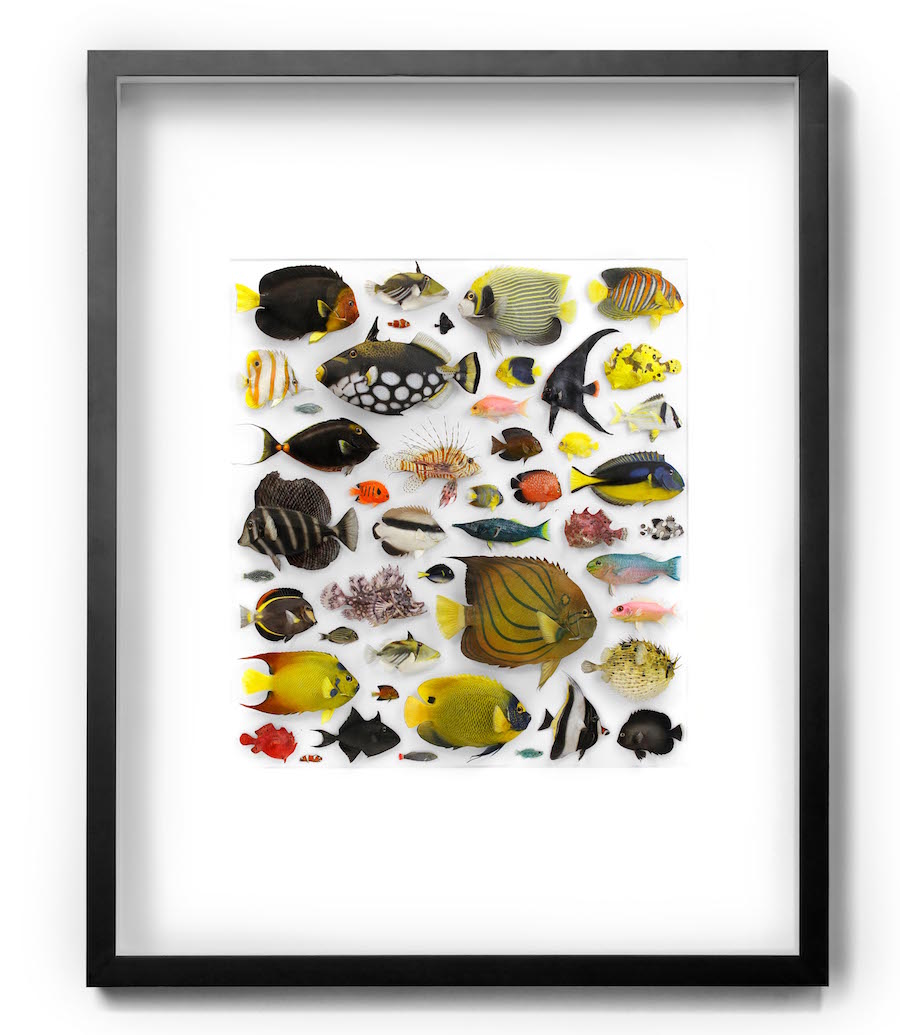
Fish Mosaic
Share this Post

